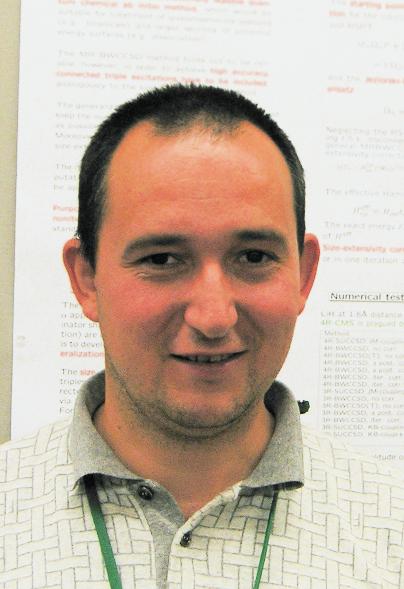Towards quantum chemistry on quantum computers
Quantum computers have a potential to change the way computational chemistry is done. As was shown in the seminal work by Aspuru-Guzik et. al. [1], quantum computers, if available, would be able to perform the full configuration interaction (FCI) energy calculations with only a polynomial scaling, in contrast to conventional computers where FCI scales exponentially. Of course, experimental realization of large enough quantum computers is an extremely difficult task and presently there are severe limitations on number of qubits, their connectivity, number of realizable gates and their fidelity, noise and decoherence. Nevertheless, practically useful quantum simulations in chemistry would require 1-2 orders of magnitude less qubits and gates than useful cryptographic applications, so they are a prime candidate for the emerging quantum hardware in the near future.
This lecture will summarize our work in the field of interconnection of quantum chemistry and quantum computing [2]. Improved version of the quantum full configuration interaction (QFCI) method, which uses the iterative phase estimation algorithm and its application to non-relativistic [3] as well as relativistic [4] configuration interaction (CI) energy calculations will be presented.
As far as non-relativistic CI calculations are concerned, simulations (on a conventional computer) of QFCI calculations of the four lowest lying electronic states of methylene molecule (CH2), which exhibit a multireference character were performed [3]. It has been shown that with a suitably chosen initial state of the quantum register, one is able to achieve the probability amplification regime of the iterative phase estimation even for nearly dissociated molecule. Concerning the relativistic calculations, we have performed simulations of the quantum computing analogue of the Kramers-restricted CI calculations for the SbH molecule [4]. A minimalistic example of a quantum circuit performing such a calculation, which might become experimentally realizable in the near future has been constructed. Quantum computers would also allow treatment of electrons and nuclei on the same footing, circum- venting thus the Born-Oppenheimer approximation. We have simulated the phase estimation quantum algorithm combined with the Nuclei orbital Molecular orbital (NOMO) methods [5]. Two isotopomers of the hydrogen molecule (H2, HT) were chosen as representative examples and quantum calculations of the lowest rotation-less vibrational transition energies were simulated.
An essential ingredient of efficient quantum simulation by the phase estimation algorithms are initial guesses of the exact wave functions with high enough fidelity. As was proposed in [1], the exact ground states can in principle be prepared by the adiabatic state preparation method. We applied this approach to prepa- ration of the lowest lying multireference singlet electronic state of methylene and numerically investigated preparation of this state at different molecular geometries. We then proposed modifications for speeding up the preparation process. We also decomposed the minimal adiabatic state preparation employing the direct mapping in terms of two-qubit interactions for actual realization as a quantum circuit [6].
Recently, we have also studied the possibility of using the Variational Quantum Eigensolver (VQE) algorithm together with (unitary) generalized CCSD Ansatz (UGCCSD). Our preliminary results on small systems show excellent accuracy of the resulting energies, but at the expense of very slow convergence of the variational optimization.
-
[1] A. Aspuru-Guzik, A. D. Dutoi, P. J. Love, and M. Head-Gordon, Science 309, 1704 (2005).
-
[2] L. Veis and J. Pittner, Adv. Chem. Phys. 154, 107 (2014).
-
[3] L. Veis and J. Pittner, J. Chem. Phys. 133, 194106 (2010).
-
[4] L. Veis, J. Visnak, T. Fleig, S. Knecht, T. Saue, L. Visscher, and J. Pittner, Phys. Rev. A 85, 030304 (2012).
-
[5] L. Veis, J. Visnak, H. Nishizawa, H. Nakai, and J. Pittner, Int. J. Quant. Chem. 116, 1328 (2016).
-
[6] L. Veis and J. Pittner, J. Chem. Phys. 140, 214111 (2014).



